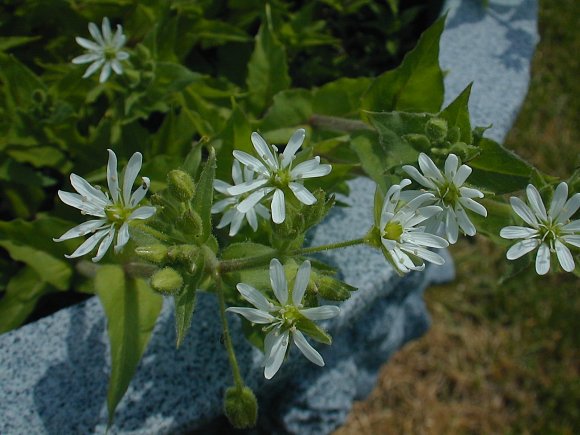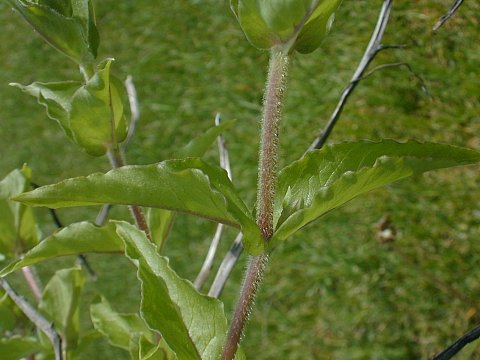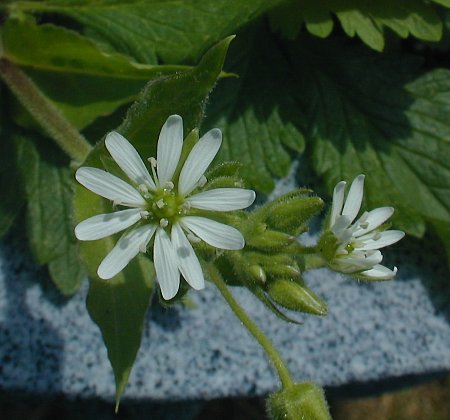Description: This herbaceous perennial plant is 1–2½' tall, branching occasionally. The stems are erect or spreading, and more or less hairy. The opposite leaves are up to 2" long and 1" across. They are cordate-ovate, smooth along the margins, slightly pubescent, and usually sessile (the lower leaves may have short petioles). Single flowers may develop from the leaf axils of the upper stems, while the remaining flowers occur in small clusters at the end of stems.

Each flower is
about ½" across when it is fully open, consisting of 5 white petals
that are cleft, 5 green sepals that are ovate and pubescent, 5 slender
white styles, and 10 stamens. There is some variability across
populations of plants regarding how deeply cleft the petals are. These
petals are slightly longer to much longer than the sepals. The pedicel
of each flower is conspicuously pubescent and up to 1" long. The
blooming period occurs from late spring to late summer and lasts about
2-3 months. Each flower is replaced by a seed capsule that is ovoid and
single-celled; it contains several seeds. Each seed is
orbicular-reniform and minutely bumpy across the surface. The root
system is fibrous and produces rhizomes, which enables this plant to
form clonal colonies.
Cultivation:
The preference is full sun to light shade, wet to moist conditions, and
fertile soil that is loamy or silty. It can withstand dry conditions
for short periods of time.

Range &
Habitat:
The non-native Water Chickweed occurs occasionally in northern Illinois
and a few
counties in central Illinois (see Distribution
Map). It is adventive from Europe and appears to be
spreading. Habitats include wet to moist areas along streams, meadows,
roadside ditches, pastures, and gardens. It often occurs in degraded
habitats, but can also be found in higher quality habitats growing
alongside native flora.
Faunal Associations:
The nectar of the flowers attracts small bees and Syrphid flies; some
bees may collect pollen, while flies occasionally feed on pollen. The
caterpillars of several moth species probably feed on the foliage, like
other chickweeds. The seeds of chickweeds are attractive to sparrows
and other birds, while the foliage is eaten by rabbits. Because Water
Chickweed frequently occurs in wetland habitats, its foliage is
probably eaten by the Canada Goose.

Photographic
Location:
The photographed plant was growing in a large flower pot at the
webmaster's apartment complex in Urbana, Illinois. Water Chickweed also
occurs along streams and drainage ditches in the area.
Common:
This is the largest chickweed in Illinois and one of the more
attractive species in this group of plants. It can be combined with
other flowering plants to good effect in a flower garden. However it
may be regarded horticulturally, ecologists regard this species as a
weed because it is non-native. The identification of different
Chickweed species is difficult. Water Chickweed belongs to a group of
Chickweeds that has flowers with 5 styles and 10 stamens. However,
Water Chickweed has larger flowers and leaves than other members of
this group (mainly Cerastium spp.). It resembles Stellaria
pubera (Starry Chickweed) somewhat, but the latter has
flowers with 3 styles and leaves that are more narrow at the base. Both
of these species share the common name 'Giant Chickweed.'